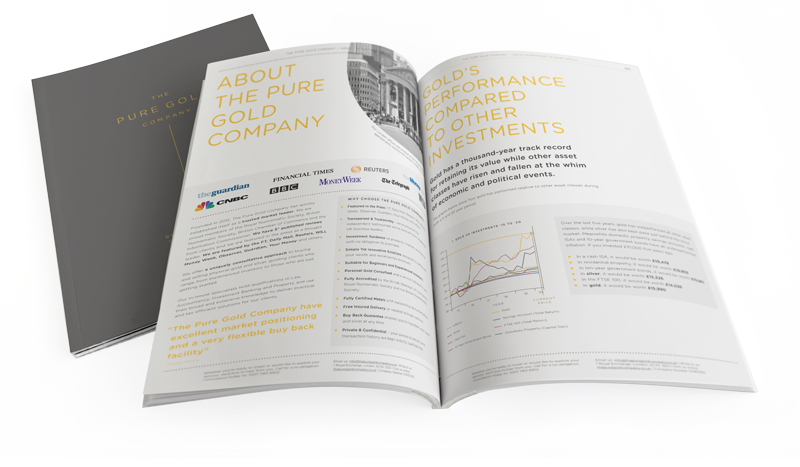Gold has long been revered as a safe-haven asset, offering security and stability when other markets falter. As we navigate through a landscape of economic uncertainties, geopolitical tensions, and shifting financial dynamics, gold continues to shine brightly, attracting the attention of major investors and central banks alike. With demand surging in recent quarters and the precious metal proving its resilience, the outlook for gold remains exceptionally strong, positioning it as a crucial element in the portfolios of those seeking to safeguard their wealth in turbulent times.
Gold is currently very popular among large investors and central banks. In the second quarter of the year, they were the major drivers of demand, adding more of the safe-haven asset to their portfolio amid an uncertain geopolitical situation. Overall gold demand increased by 4% between April and June and the outlook for the rest of the year remains positive.
Central banks
Since 2022 central banks have been on a gold buying spree, adding over 2,000 tonnes in 2022-2023, and this year started in the same strong vein with central banks buying 483 tonnes, the highest first half on record.
Most of this record-breaking demand came in the first quarter though, with second quarter demand of 183 tonnes growing 6% compared to last year, but falling 39% from the first quarter (when central banks added 300 tonnes of the yellow metal to their coffers).
Despite the slowing trend, the outlook remains positive for central bank gold demand, a view supported by the findings of the World Gold Council’s recent central bank survey, in which 81% of respondents said they expect global central bank gold holdings to increase in the next 12 months.
What drives gold demand?
The main drivers of demand are investment, which includes big organisations or smaller investors buying gold as an investment, jewellery demand, central banks stocking up on gold for their reserves and gold used in technology.
Gold investment growth
Major institutions like banks, pension funds or insurance companies buy gold to diversify their portfolio of assets and as a hedge against market volatility. But they can buy it in different ways, including on public market or exchange, through private deals with other institutions or via exchange traded funds (ETFs), which means owning shares in a gold fund without actually owning the gold.
In the second quarter of 2024 there was a net ETF ‘outflow’ of 7 tonnes, which is substantially better than 121 tonne outflow in the first quarter, and also an improvement on this time last year (21 tonne outflow). Despite slightly negative ETFs in the second quarter, the trend is positive, with a higher rate of buyers than sellers towards the end of the quarter and going into the second half of the year.
Coins vs bar sales
While coin demand saw a slight dip, bar demand showed notable growth, reflecting the continued strength of the gold market. Many individual investors took advantage of rising prices to add to their physical gold holdings in the second quarter. It’s common for some gold owners to capitalize on sharp price increases by selling, which contributed to a minor 5% decline. However, this activity is a natural part of a healthy market and underscores the liquidity and enduring appeal of gold as a valuable asset.
Private deals
Alongside bar and coin demand and ETFs, there is another demand driver that is harder to track – over-the-counter (OTC) sales. These are the transactions that are agreed between two parties privately rather than on a public exchange, for example if one bank wants to sell some of their gold and makes a private deal with another bank.
Because the market is so private and opaque it is much harder to track and collect data on these deals. The World Gold Council uses market surveys, trade data analysis, and partnerships to estimate OTC demand. They gather information from bullion banks, refiners, dealers, and other market players involved in the buying and selling of gold, and have estimated that 329 tonnes of gold demand came from OTC deals.
Gold Jewellery
Gold jewellery demand is quite price elastic. That means when prices are high people put off buying jewellery in the hope they can get a better deal when prices go down. It is often a discretionary purchase so can ‘wait’ for more favourable times. The surge in the gold price over the last six months put some jewellery buyers off in the second quarter.
Global jewellery consumption was down 19% in the second quarter of 2024 with the biggest fall coming from China where high prices were exacerbated by decelerating economic growth. China and India are the largest jewellery markets, and demand was down 35% and 17% respectively.
Technology fuelling gold demand
The quantity of gold used in technology applications may be relatively small, accounting for just over 6% of total demand, but there are strong drivers of growth, specifically from AI and high-performance computing. Second quarter technology demand grew 11% to 81 tonnes, its third successive quarter of double-digit growth.
Gold is not as widely used in industry as its sister-metal silver, where technology accounts for around half of all silver demand, but the growth in the quarter is in step with wider demand for microchips that can power the AI revolution.
A solid foundation to build upon?
In conclusion, gold remains a cornerstone of financial stability in uncertain times, with robust demand from central banks and institutional investors driving the market. Despite fluctuations in specific areas like ETFs and jewellery, the overall trend suggests continued strength in gold demand, particularly as geopolitical tensions and economic uncertainties persist. As we move further into the year, the enduring appeal of gold as a safe-haven asset, combined with its growing role in technology, indicates that its market relevance will likely remain strong, solidifying its position as a key component of diversified portfolios worldwide.


